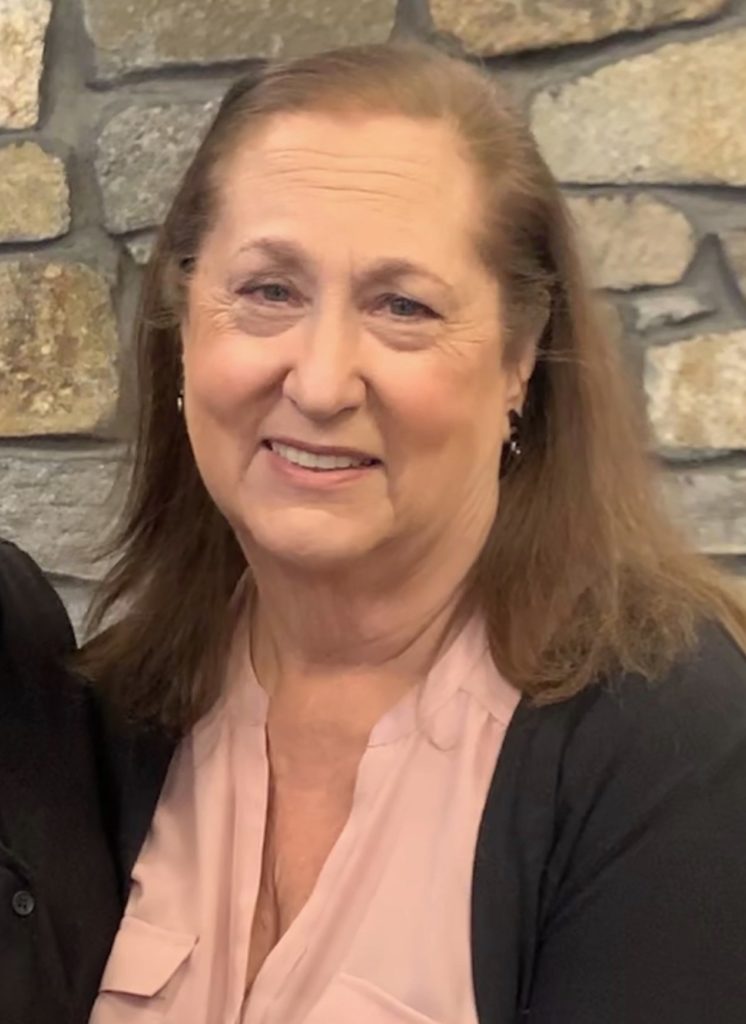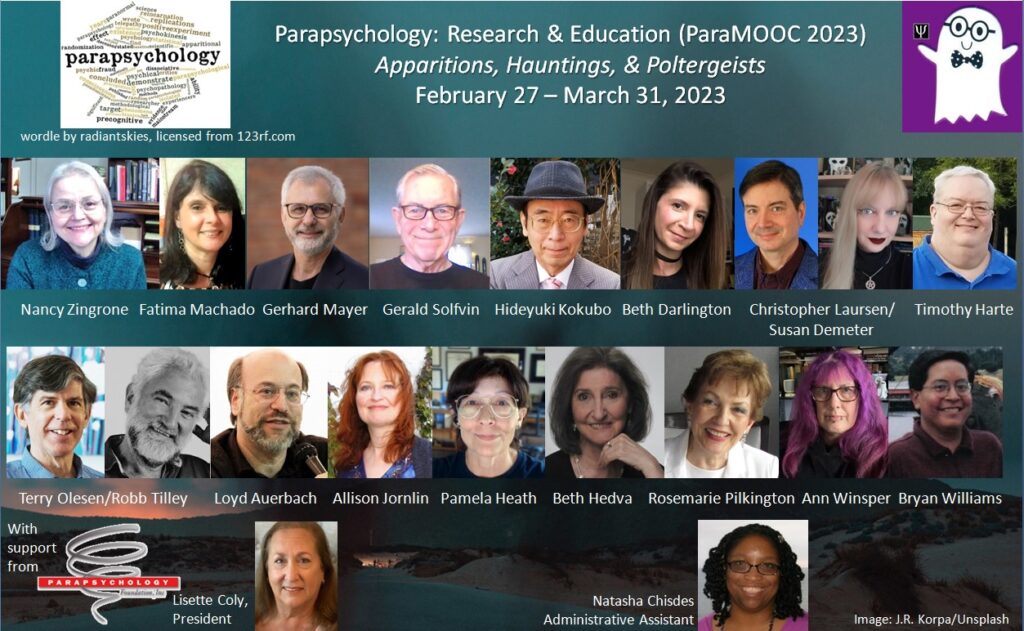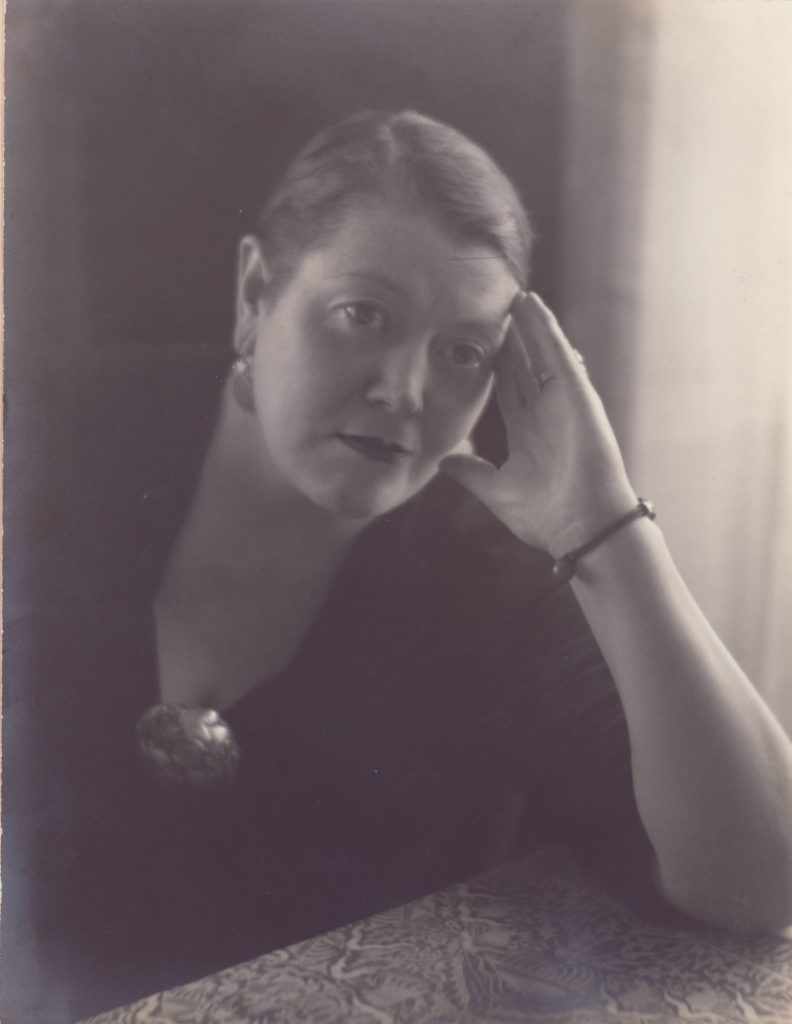I have been enjoying immensely the content of the 2023 Parapsychology and Education Massive Open Online Course (affectionately known as the ParaMOOC) addressing this year’s theme “Apparitions, Hauntings and Poltergeists”. I realize last month’s blog was dedicated to the value of the ParaMooc series but apart from its real time presentations all the lectures are captured and available within the PF Youtube channel and that of Parapsychology Online. Don’t miss this cache of fascinating material. The ParaMooc team consisting of Dr. Nancy L. Zingrone Moderating, Curriculum coordinator Bryan Williams and Natasha Chisdes providing administrative support, are to be commended and applauded for this fruitful endeavor.
In listening to these valuable presentations I could not help but think about Eileen J. Garrett’s experiences and research into these phenomena. I want to share with you an interview published in her Tomorrow Magazine, Vol. 1 no. 2 Winter 1952-53 in which she is interviewed before the publication of one of her case files. Often I am asked about her general method and approach to poltergeist and haunting cases. Herewith is her commentary.
“When I am called on a poltergeist or haunting case I’m always accompanied by an officer or a trained member of psychical research who will take over the interrogation once I have passed into trance. I’m not told what form of experience or what kind of phenomena have been taking place; if the case has to be discussed before I go into trance, I’m excluded from the conversation.
Invariably, the members of the family who need my services know very little about haunting and ghosts; they are uneasy and awkward in my presence. I’m never certain that they do not regard me as another kind of menace. I’m therefore very happy to go into the sleep-like state of trance, produced at will by autohypnosis.
What happens during the trance? I am always asked. There may be a difference of intonation in my speaking voice when the control announces his presence. My control, Uvani, addresses himself not to the family but to the research officer in charge. Quietly he proceeds to tell what he sees, hears or senses. He usually has no difficulty in establishing contact with the entity or discarnate intelligence who admits being the cause of the disturbance. When he is certain that contact has been established with the right one, Uvani advises ‘I shall now withdraw and permit the unhappy one to speak for himself.’ The control personality then immediately changes, and I as the medium appear to become possessed by the unhappy entity, who seems to take full advantage of the opportunity to air his grievances. The nature of the experience is similar to the analyst’s method. Once the entity can find speech and can relate his experiences, he expresses a feeling of relief at being awakened from what he often describes as a bitter and unhappy dream condition. When the visitor is told, ‘You are no longer in this life, some part of you is caught in the web of this unhappy experience,’ a feeling of relief manifests itself.
Sometimes, I feel that those who return to the scene of their own unhappiness do not fully return; a segment of the personality continues to exist in darkness and disorder, as happens in the case of those who are insane.”
When asked if the laying of ghosts is a term one uses without really knowing what it means Garrett went on to add “Yes, I suppose that is what I do. We put him or her to rest in the sense that they are released from the dreadful bonds that tie them to their life in which they have suffered unholy tortures of the mind and of the body to find peace and never again have cause to haunt the environs.”
Quite something, eh? Check out the growing list of ParaMooc presentations for more information.


